Chris Jones's Blog, page 8
December 9, 2020
Announcing The Successfully Selected Writers and Stories for Twisted: Ghosts of Christmas
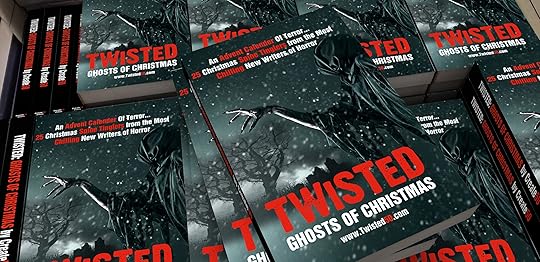
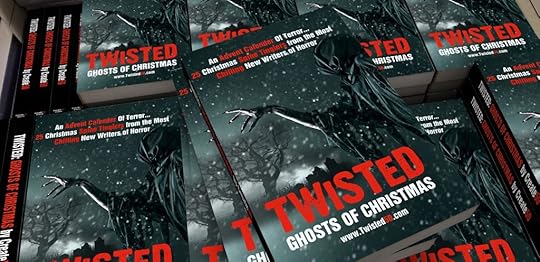
You can now get the book on Amazon HERE.
As ever, debate among the judges was heated, but we finally arrived at a list!
Please do leave a comment on this post, and if you are not on the list, keep going, it’s an insane job to judge art. We may also sneak some bonus stories into the eBook too!
I will be in touch soon about when to buy copies of the book so that we can co-ordinate getting on the Amazon Best Seller list.
OK.. the tension mounts… So drum roll please… The successful writers and stories are…
Maxine Lennon and Persimmity Glue
Lawrence Morgan and Vincent Van Gogh’s Ear
Josh Shevill and Antlers
Andrew Perry and The Gifts of Christmas Past
Kurt Fried and Today’s Treat
Mark Walker and Isabella
Ricardo Bravo and Do You Believe in Santa?
Helen Bang and The Chorister
Suzanne Fox and He Moves in the Night
Chris Jeal and Revenge is a Dish Best Served with Stuffing
Emma Pullar and Awake
Toby Norways and A Dog is for Life, not just for Christmas
Sherice Griffiths and Jinx
Paul Shearer and Family Christmas
Fiona Faith Ross and Roasted
Jamie Shearing and Just for Christmas
Rose Banks and Needles
Tim Coleman and The Weeping Widow
John Suriano and ComicCon Christmas
Claire Rye and Oh! Christmas Tree
Suzie Grogan and Life at Christmas
Gerry Driver and Santa Sleighed
Aaron Nash and The E.D.P
Rachael Howard and The Spirit of Yule
Gordon Slack and No Heart
Congratulations again, if this is your first time, it never gets old. Your name is on the cover of a book and your words inside it.
And the bonus stories are written by…
Steven Butler
Simon Cluett
Evie James
Al Campbell
Michael van Koetsveld
Lee Burgess
Kendall Castor-Perry
Nick Yates
Harriet Barbir
Rebecca Handley
Thank you also to Mark, Emma, Elinor, Lawrence and Savannah for working around the clock to make this happen.
OUTSTANDING! Publishing date of the 16th December now loking very certain.
Onwards and upwards!
Chris Jones
My movies www.LivingSpiritGroup.com
My Facebook www.Facebook.com/ChrisJonesFilmmaker
My Twitter @LivingSpiritPix
Sign up to my mailing list for updates on
events, books and free film making tools
November 26, 2020
Can you write a Christmas Ghost or Horror Story?
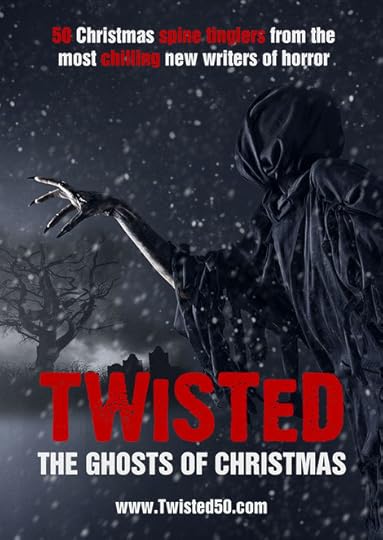
 Deadline Dec 6th midnight GMT // 1,000 Words or fewer
Deadline Dec 6th midnight GMT // 1,000 Words or fewer‘Twisted 50: The Ghosts of Christmas’ is a collection of winter spine tinglers, fifty stories of the paranormal, fifty writers… fifty slices of terror.
This special volume will be published on December 16th, just in time for that extra special gift this season…
Can you write a short Twisted tale in 1,000 words or less? The 50 best stories will be published in both paperback and online.
We all love a good Christmas ghost story or horror movie. If Hammer House of Horror, Tales of the Unexpected and Pans Books of Horror set your pulse racing and mind spinning as a youngster, then writing a short story, set at Christmas, offers the darkest recesses of your mind, a deliciously macabre feast in which to express itself.
You know you shouldn’t let it out, but you know you want to.
Interested…? Let’s dig a little deeper into this paranormal, wicked and dank shallow grave…
Found out more HERE.
Onwards and upwards!
Chris Jones
My movies www.LivingSpiritGroup.com
My Facebook www.Facebook.com/ChrisJonesFilmmaker
My Twitter @LivingSpiritPix
Sign up to my mailing list for updates on
events, books and free film making tools
November 24, 2020
Congratulations to the 25 Selected Authors in our Father Christmas Bedtime Stories Book


You can now get the book on Amazon HERE.
Wow, well that was a whirlwind!
We had 230 stories submitted to this initiative and each one was read by four experienced readers before selecting the 25 to go into the book.
I plan to share an analysis of the experience in the coming days so we can all benefit from what we learned.
We have also just opened up bookings for our Christmas calls with Santa if you have kids or knows someone who would like this. All proceeds are going to help the London Screenwriters’ festival. You can read more and book HERE.
The standard was high, though some repetition of ideas caused us to have to choose between stories that were similar. If you didn’t make the cut, remember it’s soooooo subjective too. It’s art and inescapable. If you wrote to a crazy deadline AND managed to get it submitted, that in itself is an accomplishment AND you created something that is now in the world. That’s marvellous.
But for now, lets ALL give the 25 who were selected a round of applause!
Drum roll please (and in no specific order)…
Ricardo Bravo, A Christmas Lesson from Timmy, the World’s Smallest Giant
Carole Parsons, Amimej and the Back-to-Front Christmas
Cheryl Lang, The Lonely Christmas Tree
Harriet Barbir, Santaroo
Gillian Spiller, The Christmas Sock
Ruth Nolan, Rudolph’s Nose
Dominic Brancaleone, A Bedtime Adventure
Maxine Lennon, He He He!
Hank Isaac, Santa… Really?
Helen Lusher, Hare And The Moon
Catherine Veitch, Shine Brightly
Rachael Howard, Pippin’s Worry
Josh Shevill, Omega-Man, The (not so) Lonely Hero
Zanna Twist, Mittens and Mink Meet Santa!
Rachael Crofts, Cub’s Christmas Tale
Fiona Hunnisett, Grace’s Dad
Jen Lyon, Belle’s Christmas Wish
Joelle Edwards, A Pinch of Christmas Courage
Jenny Heap, Christmas Eve at the Zoo
Jennifer Bozarth, Fidget the Elf
Cera Rose Pickering, Christmas Colours
Lucy Unwin, The Christmas Moon
Siân Rowland, The Littlest Shepherd
EV Parker, I Want
Nadya Thulin, Mr. Kris
These stories will all now feature in the book which is being put together by McKyla Cox in America… We will be deciding on the title today too.
Massive and I mean MASSIVE thanks and acknowledgement must go to the whole team who worked round the clock to read and asses everything.
So thank you Savannah Morgan, Elinor D. Perry-Smith, Emma Pullar, Lawrence Morgan and Mark Walker.
We will also be filming them in the coming days, with Michael van Koetsveld who will play our Santa, reading them aloud.
These Christmas films will be released one a day in the run up to the 25th of December, on the Facebook page and Youtube. And please do consider buying the book too, links will be going live in the next few days.
AMAZING and a testament to what is possible with a big goal, drive and a world class team as well as super talented writers.
Onwards and upwards!
Chris Jones
My movies www.LivingSpiritGroup.com
My Facebook www.Facebook.com/ChrisJonesFilmmaker
My Twitter @LivingSpiritPix
Sign up to my mailing list for updates on
events, books and free film making tools
November 15, 2020
Create50 Lost One Of It’s Vibrant Voices: A Tribute to Richie Brown
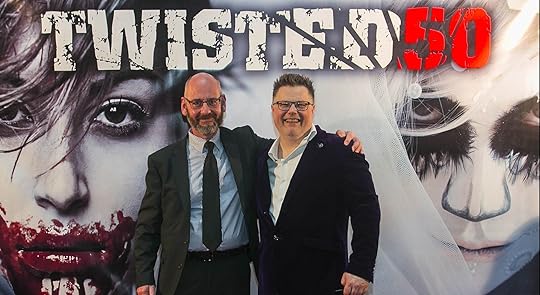
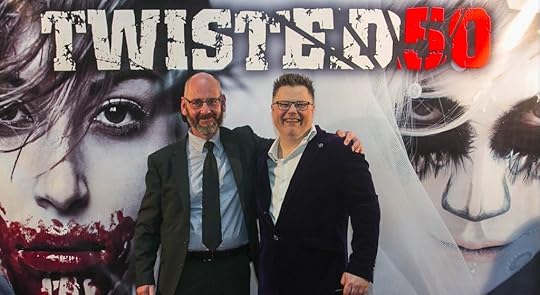
I just found out that Richie Brown, one of our writers from Create50, has sadly died.
Richie was a prolific writer for Create50 and a huge supporter, both publically, and behind the scenes.
A handful of writers really committed to elevating the whole Twisted50 experience for everyone, and Richie was one of them. During the most important months of the project, Richie would email me almost daily with updates, data and information as he tracked in staggering detail, the success of the project. He would also dive into commenting online when commenting became negative.
I know how much Create50, Twisted50 and the wider writing community had meant to Richie and I can tell you, from my perspective, he meant just as much to me and the team too.
I understand that Richie had suffered a stroke and that the Create50 initiative had reignited his passion for writing. It’s easy to overlook the importance of the act of creating, especially to those who NEED to create, like Richie did. It’s what we do, it’s the gift we share with the world, and it is our legacy.
And so I present to you, as a tribute to the great man himself, his story ‘The Cyclist’ from Twisted50 volume one. I do hope that he is looking down now and chuckling at the idea that even posthumously, he get’s to freak us all out.
Bravo and let’s raise a glass to Richie…
Now, read on (or listen if you want the Audiobook version) if you dare…
Listen to the audiobook or read the story…
The Cyclist by Richie Brown
There is too much sky above the Lincolnshire Fens and the uninterrupted horizon sprawls without end. The dreary flatness of the treeless land is relieved but little by the roads, which run on banks higher than the black fields, sometimes alongside wide, deep drainage ditches, the lumbering clouds chasing their clumsy shadows across the empty distance.
Merle drives her little red car on such a Fenland road that seems to run forever, into nowhere, wishing the featureless miles away and the day gone. She loathes these duty visits to Uncle Stanley, shared out exactly and grudgingly between herself and her sisters. It is madness for him to be living out here alone, at such an age, but he will not move and from a vinegared sense of duty, the three sisters each make their reluctant and separate visits.
“The old bastard,” says Merle, but does not hear herself because Merle does not use such language.
When will she get there? The dashboard clock is broken, so Merle looks at her wristwatch, shaking it down her arm a little so she can see it beyond the cuff of her jacket. She still has an hour of driving she reckons, and looks up and there is a cyclist almost in front of her. Merle swerves but even so almost catches him with the passenger side of the car. She drives on, her heart beating furiously, glancing into the rear-view mirror. The cyclist has toppled onto the grass verge but is getting up and retrieving his bicycle.
“Prick,” says Merle, but again does not hear, as that word, in that sense, is not in Merle’s lexicon. She smiles vindictively; the smile fades: he might have scratched her little red car! Cyclists are so irresponsible, and a complete hazard to responsible and considerate road-users. Such as herself.
In the rear-view mirror, the cyclist is a dwindling patch of neon-yellow, tiny now. Good riddance, thinks Merle.
Merle forgets the incident, content to dwell upon her dull errand, the lack of gratitude the old man will show her, not that she does this for gratitude, and the emptiness of the scenery.
Some miles on, she stops at a level crossing, one of many on the roads of this flat landscape, as the warning lights flash and the barriers drop. A goods train approaches, immensely long, and Merle drums her fingers on the steering wheel as the train crawls towards the crossing and rattles by interminably.
In the rear-view mirror, something snags Merle’s eye. Way back, a long way back, a tiny flash of yellow. Merle peers and squints. Is that the same cyclist? No, almost certainly not, as he must be far behind by now. It must be another cyclist, but has she passed another? No, she has not, because Merle is a very observant driver.
It is the same cyclist, she is sure.
Merle fidgets in her seat. Although it had been the cyclist’s fault she almost hit him, she doubts he will see it like that – they seldom do – so it is best to avoid any potential unpleasantness. How much longer will the train take to pass? She watches the mirror. The cyclist seems to be moving very fast, but it is so difficult to judge as the flat landscape offers little perspective against which to judge speed or distance.
“Come on,” she mutters, unconsciously tapping the accelerator. The train passes by and slowly the barriers raise, and the road is open. Merle pulls away more sharply than she might, pleased to see that the cyclist is still some distance back.
Yet riding very fast, she thinks.
Merle drives on, flicking her eyes to the rear-view mirror more often now. The cyclist does not seem to be gaining on her, but is surely keeping pace. Is that possible? She is travelling at 45 miles per hour, which she deems safe for these Fenland roads. The roads are generally straight but sometimes have bends that take drivers by surprise, and the drainage channels alongside the roads are very deep. Yet, so she might get to dear Uncle Stanley in good time, she puts her foot down, just a little.
Merle concentrates hard upon the road and the driving, edging her speed to 55. She is uncomfortable at such a pace on these roads, leaning forward slightly, gripping the wheel tightly, unwilling to take her eyes from the road to check the rear-view mirror, but at last she does, she has to, and moans a little, for the cyclist is nearer, still a distance off but closer than he was just minutes ago.
Merle presses the accelerator and the little car picks up speed, rattling and shaking as it increases to 65. She never drives this fast, not even on a motorway, and is frightened at how unsteady the car is, how even the slightest movement of the steering wheel is exaggerated at this speed. She grips the wheel in her thin fingers, not daring to look at what is behind, concentrating upon the road as the little red car races on because it is dangerous to drive at this speed but she must look in the mirror, cannot help it, and he is closer again and before her eyes snap back to the road she sees that his legs are blurs, they move so fast, and how can that even be?
The car hurtles on, to 70, to 75, and Merle is more scared than ever before, than ever before in her life, scared of the speed, of what might happen if she loses control, terrified of the cyclist, because it is not right not fair to ride a bicycle so fast, no-one can do that not over such a distance, and again she checks the rear-view and he is closer again, right behind her, so near that she sees his fluorescent upper-body, those impossibly-fast, pumping legs as vague as smoke, and this is not right either, he has no face beneath his silly little cyclist helmet, just a blur of dark, a smudge, no visible features even on this bright day.
Merle gazes a little too long, then snaps her eyes to the road, thank goodness it is so straight; the noise within the car and the shaking increase, the car racing at 80, the wheel shuddering in her hands, tears trickling unheeded, her whole world now the road, the speed, the noise, the mirror, and she looks again, he is almost upon her, and the shadow where the face is shifts, splits in two, opens like a flower, into massive jaws, scarlet and crimson, lined with fangs, as wide as a dustbin lid, wider, all the time keeping up with her, keeping pace, not missing a beat, not losing an inch, gaining on her and the jaws gape, stretching towards her.
All this in an instant, and Merle breaks, and brakes. The little red car slews wildly, tyres screaming, out of control, and Merle hears and feels the fleshy thump as the cyclist smashes into the rear of the car (she is glad, she hopes he dies, she hopes it is dead) and the car hurtles from the road, down the steep bank into the deep, cold water of the dyke.
Merle is uninjured, although her chest aches where she slammed into the seat belt, and the calmness of shock displaces her fear and panic. The water boils around the car as it begins to sink, surprisingly fast, the bonnet slipping in first, bubbling steam and air, but Merle knows what she needs to do, and unbuckles her seat-belt – it comes undone, no damage, she will not drown here like a rat – and kicks off her shoes. If she could she would take off her jacket, but there is no space and no time. Merle knows that if she tries to open the door the water pressure will prevent her, so she must open the window, and squeeze through that, and swim, if she is to live, and Merle intends to live.
Water pours through the imperfect door seals and dashboard vents, rising to the front passenger windows as she winds her window down, and the car lurches forward suddenly, cold water beginning to flood through the open window, making her gasp so she grasps the door, hauls herself through and out, just in time, struggling to hold herself against the force of water, and she is free. Merle does not look back, but swims away from the sinking car, towards the bank, smiling, eyes gleaming with adrenalin.
As Merle reaches the bank and screams in triumph, the water surges behind her, and something erupts from the grey depths, long, slender and black, flashed with neon-yellow, rearing high, and at the top a vast, red maw, bristling with snagged, sharp teeth surrounding a maroon throat, looming over her, dark against the bright sky, then striking at her, so fast, smashing her into the water, and then Merle sees
Onwards and upwards!
Chris Jones
My movies www.LivingSpiritGroup.com
My Facebook www.Facebook.com/ChrisJonesFilmmaker
My Twitter @LivingSpiritPix
Sign up to my mailing list for updates on
events, books and free film making tools
November 14, 2020
Three L’s: Lens, Light and Location… Advice For Filmmakers from Christopher McQuarrie
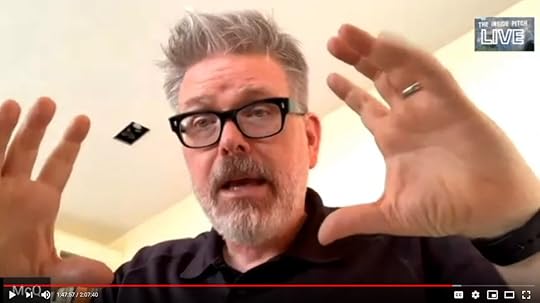
There are so many facets to direction, but Chris McQuarrie is bang on here… Lens, Light and Location.
It’s just part of this killer interview he did with Chris Lockhart whcih is worth the watch. But this part REALLY resonated with so many lessons I have learend the hard way.
Lens, Light and Location.
Of course we are assuming a great script, enough money and time to shoot, great actors, costumes, support teams… but even without those things, Lens, Light and Location is a very strong guiding set of principles that will elevate a zero budget movie. Want a good example? Watch Tangerine, shot on an iPhone.
Mastering these principles are the foundation of filmmaking, and being able to think FAST within these disciplines is what makes a director better at their job.
In some ways this is all ‘narrative film geometry’ that allows the script, cast and all the other elements be brilliant. It answers so many things for audiences too, so they can continue to unpack the delicious mystery that is unfolding in front of them.
Effectively, the principles of lens (which also includes the choice of where to place the lens and also move it if needed), light and location, draws the focus of the viewer so the director can better manage their experience of the story. These three things being ‘right’ will allow what is ‘happening’ to work even more effectively.
Getting good at it also saves time and money because we can learn to get it right faster, with less experimentation and with more confident coverage.
The cheats and hacks forged and hard won in the crucible of experience, will also save valuable resources and routinely get a director out of budget and schedule challenges.
Backlight alone is perhaps the single easiest way to elevate ANY shot (that’s the light part).
I would add, getting distance between the cast and the background, and shooting on a slightly longer lens, to help define the actors is a simple trick (that’s the lens part).
Avoiding drab locations in favour of interesting ones, and always with an ear for sound (that’s the location part).
Of course I could go on… Camera position, camera movement, the placement of shadows, the framing, the colours, the evocation of the location…
And we haven’t even got to the actors here, which is where ALL our attention should be placed.
You can watch the whole interview with Christopher Lockhart below… It’s worth it. And as Chris said, great question Pea Woodruff.
Onwards and upwards!
Chris Jones
My movies www.LivingSpiritGroup.com
My Facebook www.Facebook.com/ChrisJonesFilmmaker
My Twitter @LivingSpiritPix
Sign up to my mailing list for updates on
events, books and free film making tools
November 13, 2020
Can you write a 500 word children’s bedtime story for Christmas?

 This Christmas I am inviting you to write a bedtime story for children. Are you in?
This Christmas I am inviting you to write a bedtime story for children. Are you in?
We want to create some magic for families around the world and get all of us… imagining, dreaming, creating, writing, rewriting, peer reviewing… and all on a short timescale and low word count.
We will select 25 of the best stories and make them into a book, as well as have our very own Santa make a bedtime story video of each, a video that is free to all children this Christmas.
We want to shine some light into the shadows of 2020 through the act of creating and sharing something magical.
And all of this needs to be ready BEFORE December 1st!
The deadline is short because the project came into existence only two days ago!
So again, are you in?
The deadline is next Friday, November 20th at midnight. The entry fee is £5.
Your story should be no more than 500 words. Of course it’s a Christmas bedtime story for children too. It needs a title too, and of course your name (pen name if you use one).
We have tentatively titled the book ‘Santa’s Bedtime Book of Adventure Stories’, but we may re-title if the stories lean in other directions.
Peer review is encouraged and we have a Facebook page setup to help this process here… https://www.facebook.com/santacallsonline
We are also launching a Zoom style Santa video calls experience – expect more on that next week. But you will see this on the website too.
OK let’s all get imagining, writing, peer reviewing and submitting.
How exciting!
You can get more specifics on the website and also submit there…https://www.santacalls.online/childrens-book/
Onwards and upwards!
Chris Jones
My movies www.LivingSpiritGroup.com
My Facebook www.Facebook.com/ChrisJonesFilmmaker
My Twitter @LivingSpiritPix
Sign up to my mailing list for updates on
events, books and free film making tools
November 6, 2020
Support an AMAZING Woman on a Mission To Elevate Her Community and by Extension Change The World


Maureen Hascoet de Cuestas is an extraordinary woman.
I have known her for fifteen years now, we have worked together on many events. We have continued to support each other whenever things got tough. Often we needed just a safe place to talk and find solutions to what often felt like impossible challenges.
Maureen is a fighter too. It’s not my place to share, but believe me when I say that she had faced down more than her fair share or challenges on all fronts. I don’t think she often recognises how the odds are stacked against her. She just marches one.
She also runs TEDxCumbernauldWomen, one of only two Women only TEDx conferences in the UK this year, and the only one last year. So she is pioneering. From what I understand, her last one was the first Women only TEDx in the UK for eight years.
With Covid, work dried up and she had to return her laptop. And she lost her income too… like so many of us, she has struggled over the last six months.
I spoke with her a few months back and she shared with me that she was going to do another TEDx… She needed it. She felt passionately that her community needed it. And maybe the world needed it too.
And this one is rather aptly under the TEDx moniker, TEDx Fearless Women.
It’s who she is, it’s what she is standing for and it’s happening online on the 22nd of this month.
With no laptop, her entire office is now her smartphone.
The event will take place on a stage in Glasgow, the speakers will all be filmed properly and livestreamed right to you living room.
You can watch the video form the last TEDx she ran last year and you will see what you are in for. You can see the speakers at this one HERE.
Due to TEDx rules, she can only sell 100 tickets… So let’s help get her sold out TODAY! Tickets are £20. You can buy your pass directly below here… or go to the Website here…
I hope to see you online for an outstanding day that will elevate the heart, mind and soul…
Onwards and upwards!
Chris Jones
My movies www.LivingSpiritGroup.com
My Facebook www.Facebook.com/ChrisJonesFilmmaker
My Twitter @LivingSpiritPix
Sign up to my mailing list for updates on
events, books and free film making tools
November 4, 2020
Remembering Johnny Revolution
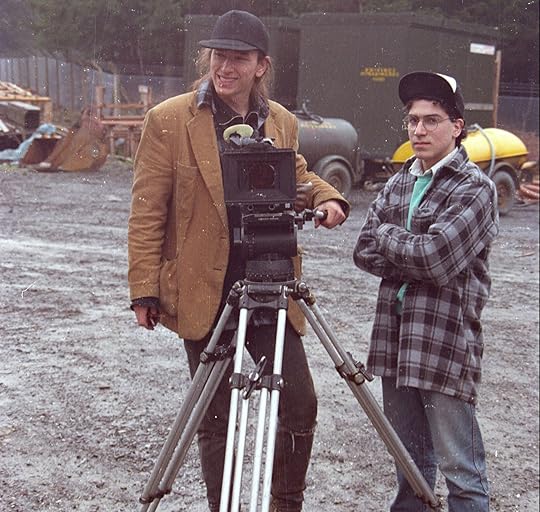
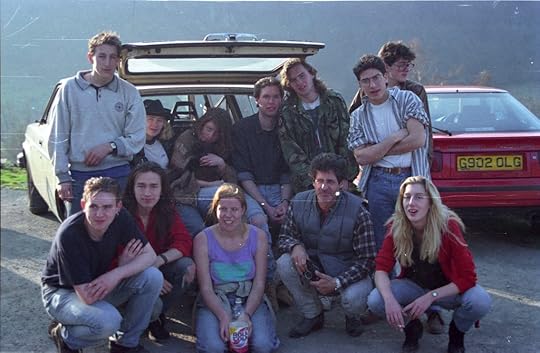
I just head that my old friend and filmmaker Johnny Kevorkian has died.
I met Johnny when he worked on our first film, The Runner, in the spring of 1990.
The production was crazy wild, we had so little idea what the hell we were doing! Johnny was around 16 and became the grip, in charge of track and dolly. We had rented one house where the entire crew lived, bunk beds in every room. Sometimes eight to a room. For the entire six week shoot on the border of North Wales. It was a defining time in all our lives and I will never forget it…
Though I do forget why Johnny was nick named Johnny Revolution.
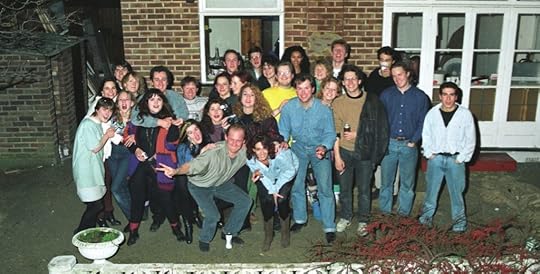
Johnny Revolution returned for our second feature too, on the far right of the crew shot here. By then he had begun his own journey to filmmaking proper, and within a decade had made his first feature and his career was launched.
Working with the kind of intensity and under extreme conditions as we did, everyone bonded on these films. We became family. And a loss like this is felt keenly, because we are… family.
Johnny, thank you for your unwavering support, especially at 3am, in the rain, on the side of a Welsh Mountain, among a band of kids who really knew no better. It really was the best of times. I am so glad we shared this together. I will miss you. We will miss you.
Nothing evokes memories like music, so here is the soundtrack to that crazy experience we share in early 1990, making a feature film against all odds…
Onwards and upwards!
Chris Jones
My movies www.LivingSpiritGroup.com
My Facebook www.Facebook.com/ChrisJonesFilmmaker
My Twitter @LivingSpiritPix
Sign up to my mailing list for updates on
events, books and free film making tools
June 12, 2020
6 Secrets to Getting Cinematic Footage on Your iPhone

By Sebastian Solberg
The question I get asked most by aspiring filmmakers is ‘What camera should I buy?”. I hear this constantly. and the amount of times that not having the ‘right’ equipment has stopped someone from bringing their film idea to life is crazy!
The truth is, to make great films, you don’t have to have the most expensive and fancy camera equipment, all you need is a mobile phone with a few accessories, a great idea and time to focus on developing your filmmaking skills.
I’ve had the opportunity to make films for Google, Canon, Red Bull and work on feature films like the Oscar short-listed documentary, The Eagle Huntress, where we were filming with state-of-the–art camera equipment that costs tens of thousands of pounds. But despite this, the iPhone with a few simple accessories is still my favourite camera to film with and the one I use the most because of its size, ease of use and the fact that I have it with me wherever I go. At the end of the day, how you use a camera is far more important than what camera you shoot with when making a film.
So in this blog I’m going to be giving my top six tips on how to capture cinematic footage using an iPhone so you can get started making your film without having to spend thousands on camera equipment. So, to achieve cinematic footage with an iPhone:

1. Use a manual camera app
Your phone has lots of auto camera settings turned on – like auto exposure, auto white balance, auto focus, auto stabilisation and these tools are great for home videos, but if you want to achieve a more cinematic look, you’ll need to have control over your camera settings. There are lots of options out there for manual camera apps but the best one I’ve found and like to use is Filmic Pro, which costs about £15. Once you’ve downloaded the app, it’s time to change a few settings to achieve the best results when filming.

2. Change the frame rate
Apple’s default frame rate is 30fps but if you want the cinematic look, I’d recommend switching it to 24fps as this is what most Hollywood films are shot at.
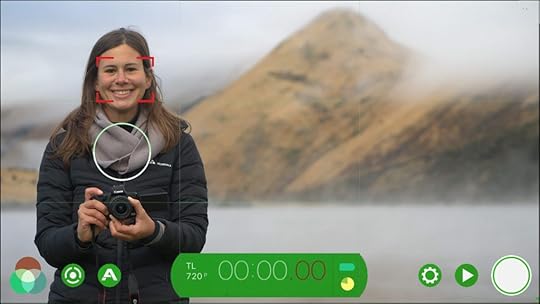
3. Set the exposure and focus
To set the exposure, click and drag the white circle on screen to the area you’d like the camera to expose to. Then hold it down until it goes red. This locks the exposure so it doesn’t change while you’re filming which is often a tell tale sign of amateur filming.
Then to set the focus, move the white square on the object or person you’d like to focus on. You can move this box around while filming if you want to change the focus or you can also click the box until it goes red, to lock the focus position.

4. Use a stabiliser
There’s lots of great options out there for your phone, my favourite is the DJI Osmo 3. This is a 3 axis gimbal which will help you achieve super smooth shots and can also work as a tripod. Getting steady moving shots is a huge part in achieving cinematic footage. If you can’t afford to buy a stabilizer you can balance your phone on a table or any other household objects while holding it. If you do use a stabiliser you need to make sure you turn off the auto stabilisation within your Filmic Pro app or else it will warp the footage as the gimbal tries to fight the digital stabilisation.

5. Use multiple focal lengths
This will help create emotion, and give depth to a scene. The iPhone 11 Pro has multiple lens focal lengths built into it, a 14mm, 26mm, and 52mm which gives you three different lens options for different scenarios when filming. You can easily switch between these three lenses in your filmic pro app. For those like me, who don’t have multiple lenses on their phone and want more options, you can buy third party lenses to stick on the front of your phone. I’d recommend moment lenses which are excellent and have several options depending on the focal length you want.
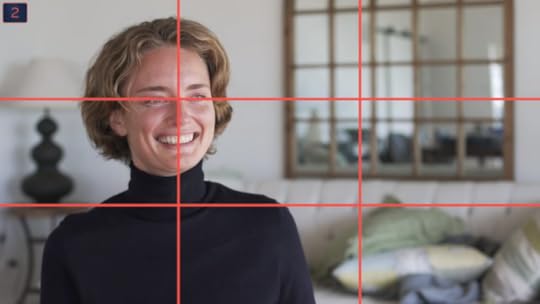
6. Use a grid guide
A grid guide divides up the width and height of your frame into thirds using two horizontal lines and two vertical lines. You can then use the rule of thirds to compose your shots. This is where you position your subject or the important elements in your scene along one of the grid lines, or at the points where the two lines meet on the grid. In the Filmic Pro app you can bring the grid up by clicking the guide button in the bottom right of the app.
The reason to use the grid and rule of thirds when filming is that more often than not, an off-centre composition is more interesting to look at and looks more natural than one where the subject is placed in the centre of the frame and the grid helps you achieve this.
So, when framing your shot, think about what the focus of the scene is – whether that’s your main character, an object or a landscape – and try to position it on or near the lines and intersections of the grid. They don’t have to be perfectly lined up, as long as they’re close. And this will help make your shot look and feel more cinematic.
So that’s it for my top six tips on how to shoot cinematic footage with an iPhone. If you found these tips and want more, check out my one-hour filmmaking masterclass where I share my top 10 secrets to making your documentary.
Good luck with your film projects and happy filmmaking!
 Sebastian Solberg
Sebastian Solberg
Director, Cinematographer & Founder of Next Generation FIlmmaker – Online documentary filmmaking course for the digital age.
www.sebastiansolberg.com
www.nextgenerationfilmmaker.com
January 28, 2020
Top 7 things I learned making my first feature ‘I Am The Prize’ by Oliver Purches

Next Saturday I am hosting a special screening of my debut feature film ‘I Am The Prize’ along with in depth discussion on how I did it and how you can to.
So… Making a micro-budget comedy feature film in 21 days is nothing if not educational. Here are my top 7 learnings:
1. Lack of time reduces quality more than lack of money.
With enough time, alternative options for coverage can be explored. If you’re rushing to make the day it will always look pony.
2. It’s really useful to engage the help of specialists who can provide small support here and there.
We had acting consultants, dance consultants, dating coach consultants – each raised the overall quality of the piece.
3. Anything that can be delegated should be delegated
ie if you have no previous personal connection to the person / thing you need then there’s no reason not to.
4. Teamwork makes incredible things achievable.
The momentum of having even a small group of people traveling in the same direction can make implausible things happen – like finding an actor to play a part 45 minutes before we need to turn over.
5. Find collaborators who will pick you up when you are down.
Over the course of a low budget feature shoot, any core crew member will likely have a day where they become acopic / catatonic. The key is to have enough people to lift one another up so that on any given day the person having a low ebb can be held by the others and the production can roll forward smoothly
6. Don’t scrimp on hot food or nice tea/coffee.
Almost not worth mentioning – but not quite. I got lucky in that my mum offered to help with this – she would cook, dad brought the meals to set. And I budgeted so we had lots of herbal / non-dairy / cafetiere options for drinks throughout. And biscuits. Never forget biscuits…
7. Be adaptable aka expect the unexpected.
One of our actors got knocked unconscious traveling to set one day. So we had to carry on without him until we could get hold of him. He had broken fingers – but after a few days was keen to finish the shoot – so I rearranged the days with him in and we completed a few days later than planned.
Bonus tip: Bearing in mind number 7, no amount of learning about or reading about or hearing about filmmaking (or screenwriting for that matter) comes close to the reality of getting on with it.
Relevant experience is useful, but you’ll never be prepared in any official way – you just need to be ready-ish. 



